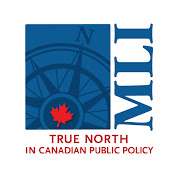In 1984, educational psychologist Benjamin Bloom demonstrated that students receiving one-on-one tutoring vastly outperformed their peers confined to the traditional classroom setting. Despite these proven benefits, the prohibitive cost of providing individualized attention to every student has remained a significant barrier for most families.
Forty years on, with the rapid advent of generative artificial intelligence, many countries have an opportunity to reach the ideal of one-to-one tutoring. Today, large language models (LLMs) can interact with students personably and adapt to their learning needs.
While recent studies highlight AI’s potential to enhance learning outcomes, they often fall short in two key areas. First, they focus predominantly on developed countries. Second, they rely on specialized but unaffordable software. However, unlike traditional AI, which excels at pattern recognition and prediction, generative AI can create new human-like content, opening up broader possibilities for application in education.
Leveraging generative AI in Nigeria
Building on this potential, a recent experiment in …





![From chalkboards to chatbots in Nigeria: 7 lessons to pioneer generative AI for education [Video]](https://aimarketingshowcase.com/wp-content/uploads/2024/09/mp_523838_0_StudentsparticipateinanAIafterschoolprograminEdoNigeria1140x500.jpg)





![Award-Winning Google Ads Agency in Adelaide [Video]](https://aimarketingshowcase.com/wp-content/uploads/2024/05/mp_462193_0_professionaladwordsagencypng.png)
![Non Aligned Movement [Video]](https://aimarketingshowcase.com/wp-content/uploads/2024/10/mp_541125_0_environmentallyresponsibleconsumerisminindia3833836496jpg.jpg)
![Omnichannel Solutions | Customer Experience & Omnichannel Marketing Services [Video]](https://aimarketingshowcase.com/wp-content/uploads/2024/03/mp_408043_0_OmniBrandingjpg.jpg)
